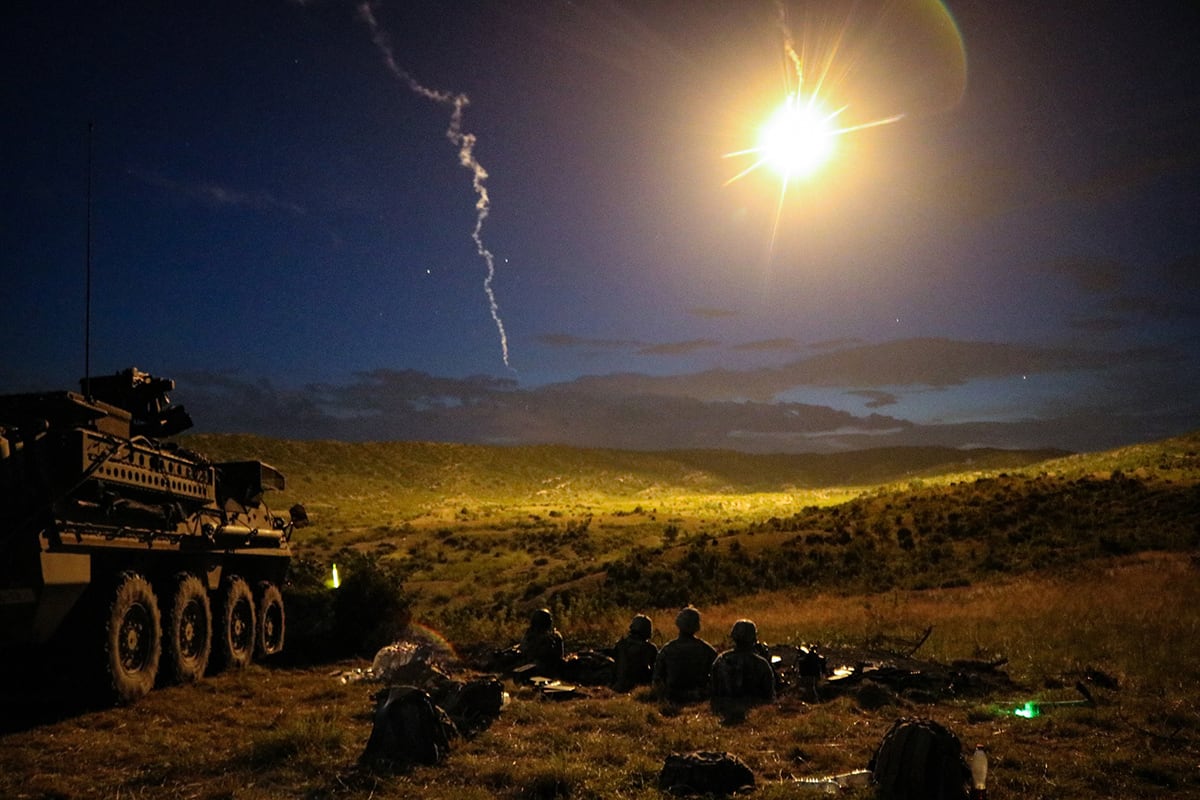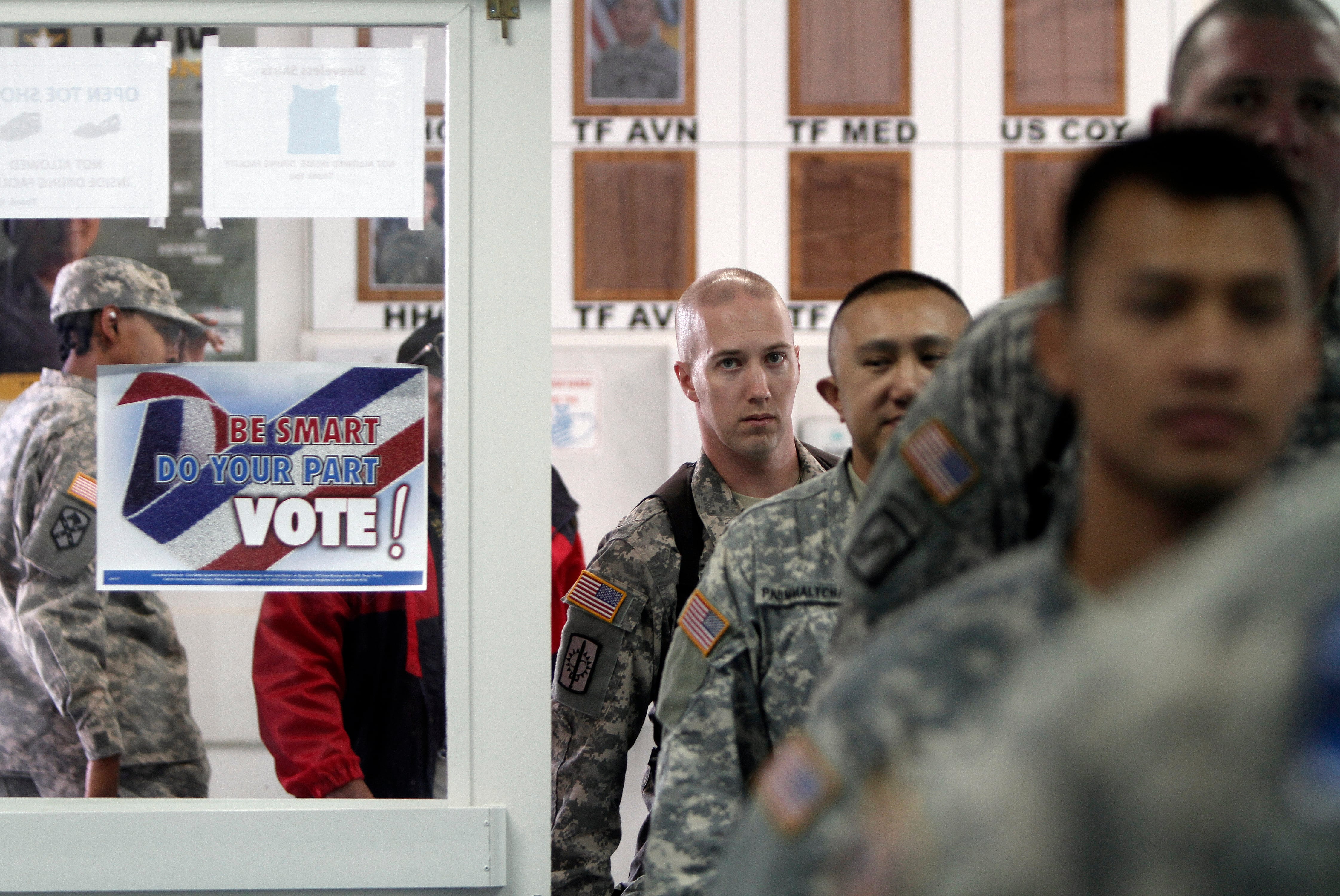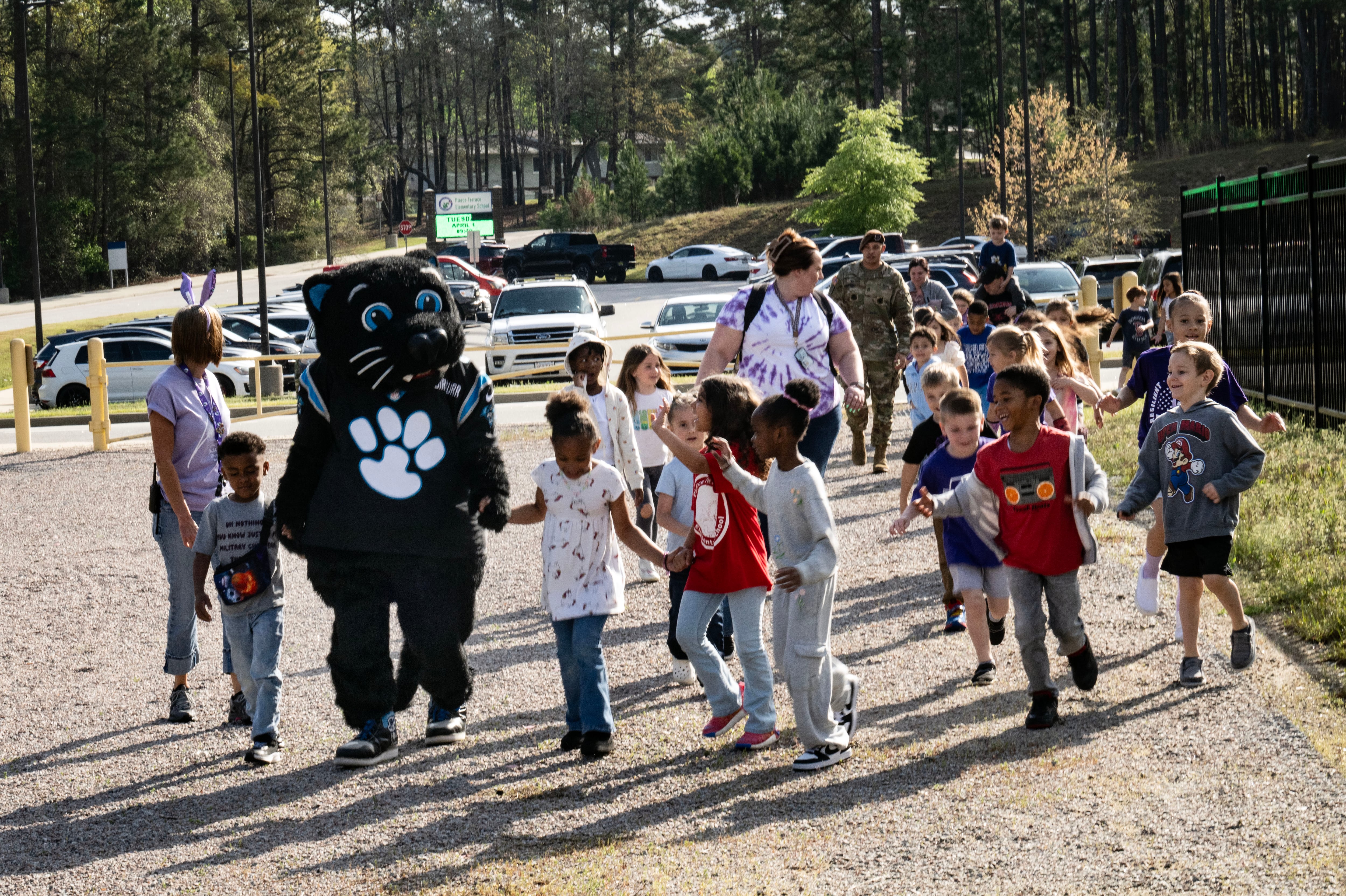Fort Benning, Ga. — The Army’s ground element and its close support have been tasked with executing missions for the last two decades they were not designed fo do, becoming lighter formations with responsibilities to counter insurgencies, win over populations and train nascent foreign security forces.
In the generation preceding the most recent wars in Iraq and Afghanistan, the generation that saw the beginnings of the careers of the commanders and senior enlisted, the fight was about a big opponent — the Soviet Union. That meant lots of steel clashing with a lot of steel on the other end, and even nuclear options.
As the Army Chief of Staff Gen. James McConville told the top commanders of the ground forces and their maneuver experts at their annual conference in September, soldiers who have been in the Army less than 18 years don’t know what large-scale combat operations entail.
RELATED
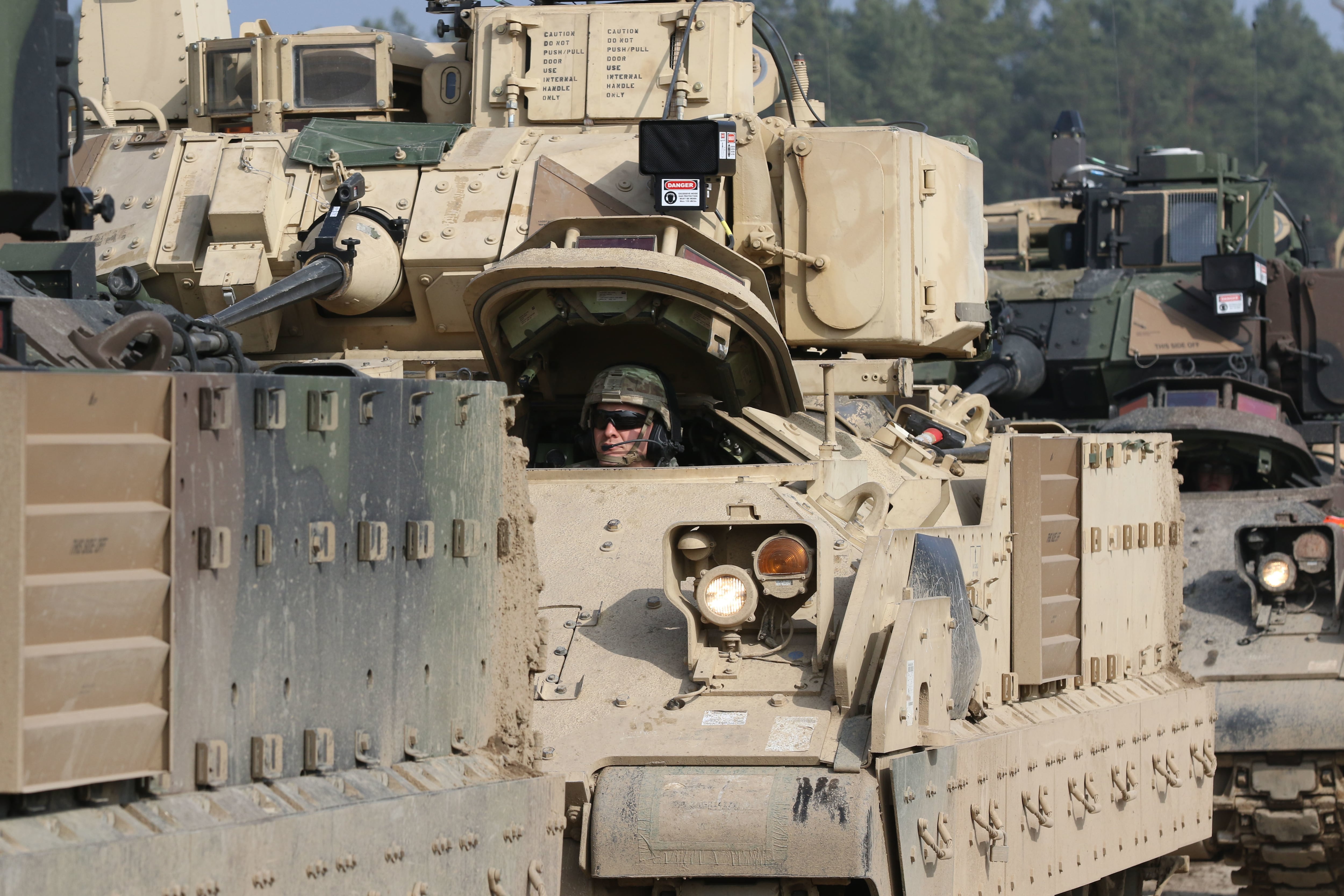
If the chief has his way, the soldiers of today and the soldiers of tomorrow will start and end their careers heading toward readiness for that potential big fight.
While talk of near-peer, great power competition has been tossed around each of the services and the Washington D.C. think tanks, Army leadership on both the ground and aviation sides have tailored that message to the force.
That seems to have started infusing the thinking of commanders about everything from total training for all of the Army, to future vehicles, to the operational forces such as the 82nd Airborne and 101st Airborne divisions.
The head of the Maneuver Center of Excellence, host of the annual Maneuver Warfighter Conference, Maj. Gen. Gary Brito, has emphasized the “readiness and lethality” of the brigade combat teams, which are the focus of ground maneuver warfighting.
That starts low and reaches high in the force.
“This is about leader development,” said Gen. Paul Funk, head of Training and Doctrine Command. “The kids you’re training right now are going to lead America’s next act.”
This isn’t a future fight, said Funk, whose role is to help form training from entry to doctoral level.
“We are in the competitive zone right now,” he said told an audience of generals, colonels and even newly minted iieutenants at the maneuver gathering at Fort Benning, Georgia.
Commanders in theater and even at home station must be aware of gray-zone conflict, below armed conflict, that sets the stage for a potential large-scale combat operation.
Soldiers will see that permeate through the ranks in their training and exercises.
The Army has spent much of the past two decades in the tactical realm, but now must return to practicing doctrine of higher order, Funk emphasizes.
From squads to large scale
On the training side, for perhaps the first time, advancements in simulations will aide that type of training, getting reps and sets for smaller formations such as squads but also allowing higher echelon commanders ways to run through realistic scenarios with forces the size of which they can’t easily, or cheaply replicate in a live exercise.
Those lower level tasks remain the bedrock of proficiency, however.
Gen. Michael Garrett, commander of Army Forces Command, said new ways of doing business are being echoed down from the defense secretary to say no to taskers that don’t fit lethality and combat readiness objectives.
Garrett said he is challenging commanders to say “no.” If they’re given 50 things to do and resourced for 20 of them, they need to push back with the three that matter.
“If we’re really, really, really serious about dominating our adversaries at the point of contact,” Garrett said, “then mastery of tasks at the individual, squad and platoon level will allow us to win every fight we are in.”
Some of that, especially for the maneuver force, will mean adapting those tactical-level proficiencies to new platforms and, perhaps, changing how they fight.
Brig. Gen. Ross Coffman, director of the Next Generation Combat Vehicle Cross Functional Team, reminded the maneuver force of its unique obligation in preparing for large-scale combat.
“People in this room start at the objective and work backward. Everyone else is focused on shaping deep and deeper to enable that fight,” Coffman said. “They are not going to solve your tactical problem. It’s not going to happen, it’s up to us.”
At a low level, he referenced another project, the work to build the M4 carbine replacement, the Next Generation Squad Weapon program.
“We’ll have a rifle that will shoot farther. Maybe the base of fire drill doesn’t have to be so close, maybe it’s farther,” he said. “How do I take this technology and apply it to our battle drills today?”
That’s being seen maybe in the most evident way in the Stryker Brigade Combat Team formations.
The platform has seen add-ons that include anti-tank missiles with remote firing capabilities, an upgrade to a 30mm gun, double-V hulls and experimentation with drone launch and loitering munitions along with active protection systems.
Lt. Gen. Gary Volesky, commander of I Corps, pointed to the Stryker and its associated BCT as what was first started as an “interim” solution in the early 2000s into a platform with more capabilities, built around the base of the infantry squad and tailored to the urban fight that will be around in some form until likely 2040.
Volesky noted that four of the eight CFTs have pieces of their work that will aid Stryker modernization. Those include soldier lethality and network.
Maj. Gen. Brian Winski, commander of the 101st Airborne Division, added a voice on the airborne operations side of the fence.
The two-star noted that the service must get back to training for large-scale joint forcible entry operations.
“There is no large-scale combat operation that would not have a joint forcible entry” Winski said. “And vertical envelopment is the key shaping part.”
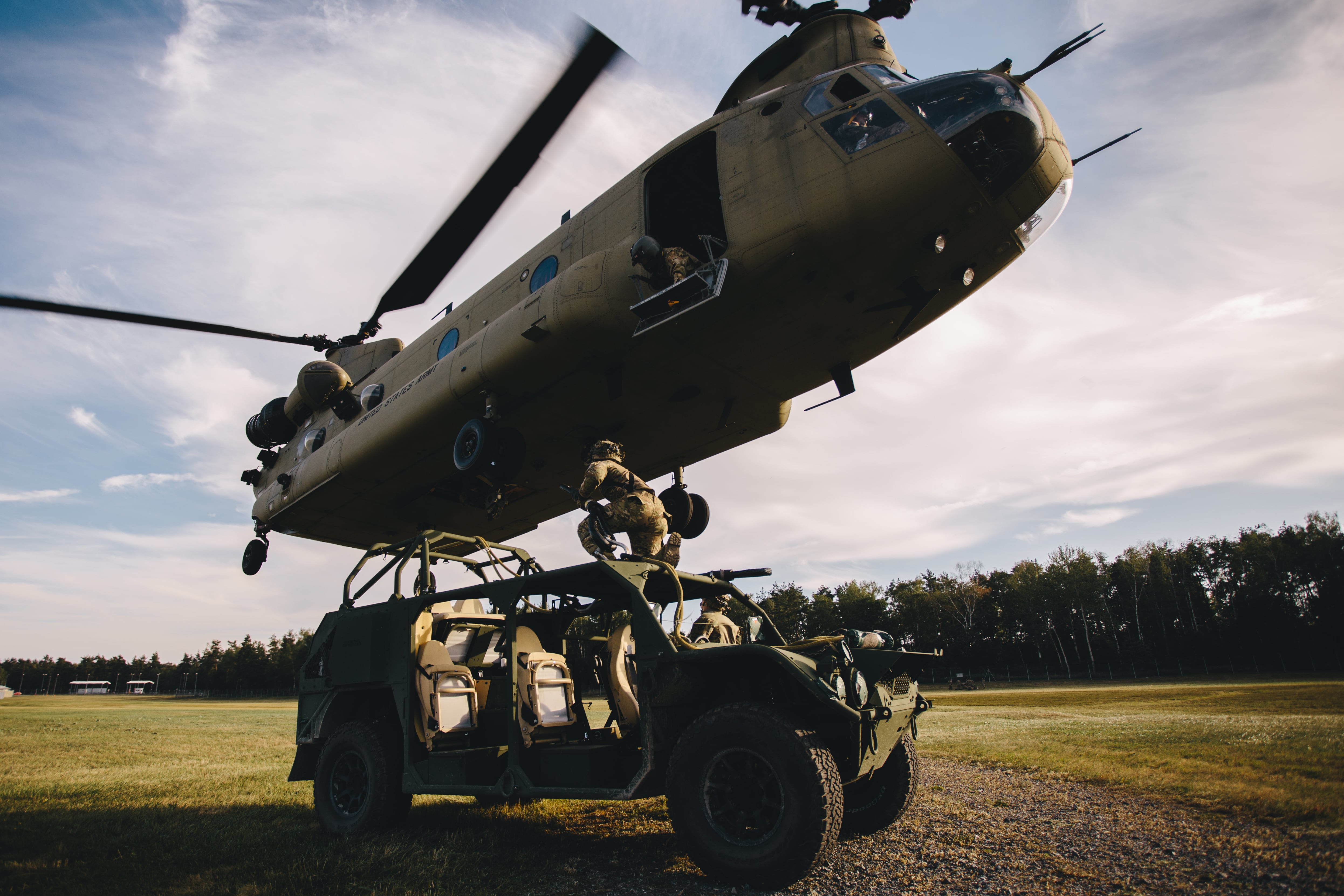
New battalion of assault aircraft
As they move toward more large-scale combat, the 101st is building a new battalion of CH-47 Chinook helicopters to use as an assault aircraft.
Historically, the Chinook was mostly an air mule, moving troops and gear across the battlefield.
An attack helicopter battalion is being tasked with providing support to the 1st Armored Division in an upcoming training exercise.
Some of what the Army needs must include the Guard and Reserve forces, said Lt. Gen. Thomas James Jr., commander of First Army.
While Guard BCTs have gotten more combat training center rotations in recent years, more remains.
Task Force Deed is an initiative that connects Guard and Reserve units with geographic areas so that if a major conflict kicks off they’re ready to mobilize for a specific command, James said.
Aviation shifts focus
One step above the ground forces, Army aviation leaders are also looking to the large scale.
At the Association of the U.S. Army’s hot topic event the week preceding the Maneuver Warfighter Conference, Army aviation leaders noted how they are simultaneously shifting their focus to large-scale combat while still resourcing for the current fight.
That will also include advances in synthetic training environments and simulators. In the past aviators have seen long delays in fielding training changes and equipment changes, leaving trainers lagging.
But recent efforts are shrinking those timelines, keeping training more relevant, leaders say.
Synthetic training environments will help aviation replicate large scale combat in ways they cannot currently do, said Brig. Gen. Stephen L. A. Michael, deputy commanding general of the Army’s Combined Arms Center.
Todd South has written about crime, courts, government and the military for multiple publications since 2004 and was named a 2014 Pulitzer finalist for a co-written project on witness intimidation. Todd is a Marine veteran of the Iraq War.
